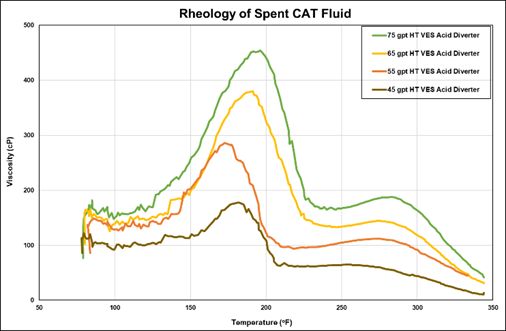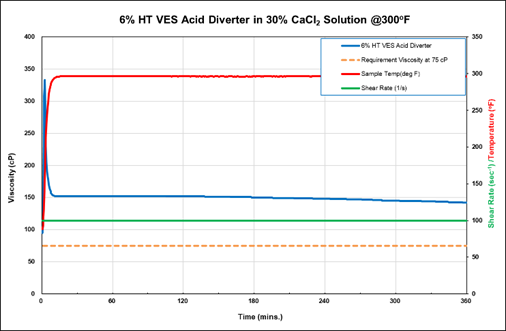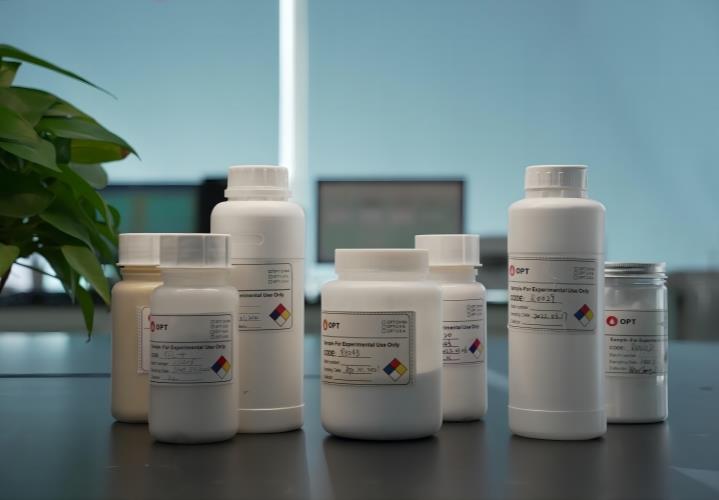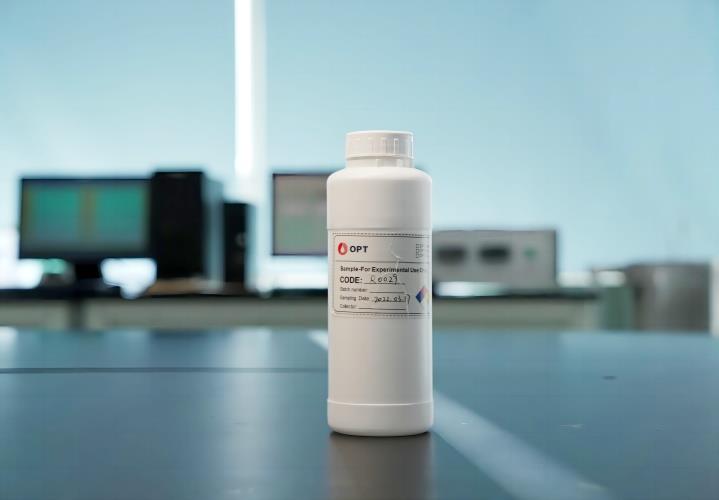Typical Properties and Field Applications
CAT technology was commercialized in 2013 successfully and has been applied in various oil and gas fields in the world. It has been proved to be effective in treatment of carbonate reservoirs with the following conditions:
|
Temperature: |
BHST 60-350℉ (15-177℃) |
|
Formation: |
Carbonates with variation in petro-physical properties |
|
Treatment fluids: |
HCl, organic acids, self-diverting fluids. |
|
Mix-water: |
Fresh water, sea water or brines |
Further information about field applications is described in documented “Case History of CAT Technology”.
Typical rheological properties of CAT fluids are shown in the following Figures.


Precautions and HSE Considerations
Viscoelastic acid diverter (KMA007, KMA007A and
KMA007B) in CAT systems play the most important roles in carbonate treatment
effectiveness. In addition, corrosion inhibitor (KMA034A) and inhibitor aid
(KMA030 and KMA031) is generally used in CAT systems to protect the tubing from
corrosion. The iron reducing agent (KMA003) and iron stabilizer (KMA003B and
KMA033) are generally used in CAT systems to prevent the iron precipitation in
the formation. H2S scavenger (KMA009) and H2S scavenger
Aid (KMA009B) are compatible with other additives in CAT systems.
The laboratory procedures, quality assurance
program and guidelines for field mixing and handling of CAT systems are
described in CAT fluid manual.
Refer to the technical sheet and SDS of the
respective product for the health, safety and environmental information of each
product.




